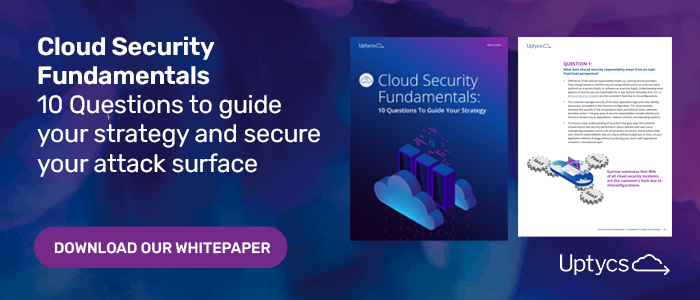Imperative to the swift remediation of malicious events inherent to the continuously expanding attack surface of today’s telemetric world, EDR and XDR function to reduce response time to remediation.
Defined by their unique capabilities within detection and response, Extended Detection and Response furthers response coverage to network areas of firewall and cloud applications, surpassing Endpoint Detection and Response's remediation at the endpoint level.
Contents
What is EDR?
What Does EDR Stand For?
What is XDR?
How is XDR Different from SIEM?
How is XDR Different from SOAR?
Why is XDR Gaining Traction?
XDR and Uptycs
What Is EDR?
EDR enables organizations to monitor endpoints for suspicious behavior, record activities, and contextualize information to run malware dependent and specific real-time automated responses.
What Does EDR Stand for?
A term suggested by Anton Chuvakin at Gartner to describe emerging security systems that detect and investigate suspicious activities on hosts and endpoints, employing a high degree of automation to enable security teams to quickly identify and respond to threats, EDR stands for Endpoint Detection and Response, also known as ETDR - endpoint threat detection and response.
What Is XDR?
Gartner defines XDR as a SaaS-based, vendor specific, security threat detection and incident response tool that natively integrates multiple security products into a cohesive security operations system that unifies all licensed components. Ingesting data from multiple security products, XDR enables an expansive correlation of telemetry data that would otherwise be difficult to find manually.
An evolution of EDR, XDR broadens the scope at which data can be aggregated, enabling a single pane of glass view across an organization's entire attack surface and vectors and adding an AI processing system paramount to the accurate anticipation, assessment, and behavioral understanding of attacks.
Using a three tiered approach of integration, analysis, and response, a fully integrated XDR solution is able to:
- Monitor and respond to telemetry data (through snmp and deep integration via api to respond to threats when an incident is detected).
- Normalize and correlate data between different data types and vendors (to find outliers in the breadcrumbs of data and through an artificial intelligence tool trained to look for behaviors from all telemetry data ingested throughout the network).
- Calculate breadcrumbs in real time that eventually find patterns of behavior that otherwise would have gone undetected.
Once the AI engine determines the investigation is deemed to be a security risk, XDR's response phase can automatically remediate the issue by responding to relevant security devices depending on the playbook configured by an organization. Examples of this include but are not limited to - blocking an ap at a firewall, quarantining a user at the switch port, or blocking a domain on an organization's mail server.
XDR's key delineation lies in its unique use of an AI system that can ingest telemetry data, deduce information based on supervised learning it has received, and then respond to the relevant device to mitigate risk on an organization's network.
How Is XDR Different From SIEM?
Through similar in aim and often confused for an EDR solution, SIEM’s differences can be seen in the time, fine-tuning, and effort required by security teams to fully implement an SIEM. A tool founded in its approach to collecting available log and event data from any source across an enterprise to be stored for varied cases, security teams often times find themselves overwhelmed by the volume of event alerts, requiring the additional component an XDR solution provides of behavior analysis, threat intelligence, behavior profiling, and analytics to help lessen the burden.
How Is XDR Different From SOAR?
As opposed to requiring a mature SOC to implement and maintain partner integrations and playbooks, XDR is 'SOAR-lite,' providing an intuitive, simple, zero-code solution that provides actionability from the XDR platform to connected security tools.
Why Is XDR Gaining Traction?
Through its ability to provide an organization with a comprehensive vantage point across their enterprise and an evolving AI centered solution archetype to support it, XDR's capabilities continue to position it as the preferred detection and response solution.
XDR & Uptycs
Accentuated by its unique ability to collect and collate data from a wide range of sources to provide faster, deeper, and more effective threat detection and response, the solution that XDR provides parallels and magnifies by Uptyc's ability to provide an even deeper scope of information and analytics to direct security decisions. Used in tandem, Uptycs redefines the unified peripheral an organization has into its network and the analytics it can achieve when adopting an XDR solution, enabling a security stance pillared by two thorough tiers of observability.
To read more about Cloud Security and Best Practices, check out our Cloud Security and Fundamentals eBook









